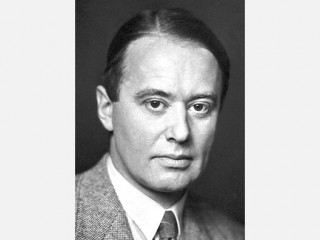
Arne Wilhelm Kaurin Tiselius biography
Date of birth : 1902-08-10
Date of death : 1971-10-29
Birthplace : Stockholm, Sweden
Nationality : Swedish
Category : Science and Technology
Last modified : 2010-12-20
Credited as : Biochemist, won Nobel Prize for Chemistry, researches on electrophoresis and adsorption analysis
The Swedish biochemist Arne Wilhelm Kaurin Tiselius was awarded the Nobel Prize for Chemistry for his researches on electrophoresis and adsorption analysis, especially for his discoveries concerning the nature of the serum proteins.
Arne Tiselius, son of Dr. Hans A. Tiselius, was born in Stockholm on Aug. 10, 1902. He studied chemistry at the University of Uppsala. Following his graduation in 1925, he became research assistant to the physical chemist Professor The Svedberg, the inventor of the ultra-centrifuge. In 1925 Tiselius began to use electrophoretic analysis, long employed for proteins and enzymes. This method studies the migration of the components in a solution under the influence of an electric field, their moving boundaries being observed by fluorescent photography. Tiselius found the method unsatisfactory, and he developed the method of observing the components by ultraviolet-light photography, using quartz lenses and a special light filter. He considered his method very specific, but he felt that its resolution capacity was not sufficiently high. He graduated as a doctor of science at Uppsala in 1930 with a thesis on this work, and he then became assistant professor of chemistry in the University of Uppsala.
As there was no chair of biochemistry in Sweden, Tiselius turned to the inorganic field, and he published research on the diffusion and adsorption phenomena in zeolite crystals. While holding a Rockefeller Fellowship at Princeton University in the United States, he was stimulated to continue his protein studies. On his return to Uppsala in 1935, he redesigned his electrophoretic apparatus and published his new model in 1937. Outstanding among the numerous advances made with his new apparatus was his demonstration that blood serum consists of albumins and of alpha, beta, and gamma globulins. These methods and results were widely used in the United States during World War II, especially in relation to the fractionating of blood serum for transfusion purposes. In 1938 a research chair of biochemistry was created for Tiselius at Uppsala, and he worked at first in Svedberg's Institute of Physical Chemistry. In 1946 biochemistry became an independent department, and in 1950-1952 a new Institute of Biochemistry was built.
In 1940 Tiselius began to work on adsorption methods, and he developed especially the methods of frontal and displacement analyses. In this work he used chromatographic methods, and he developed his technique to provide accurate quantitative results. For his work in these two fields he was awarded the Nobel Prize in 1948.
Tiselius received honorary degrees from 13 universities and many other honors. In 1949 he became a Foreign Member of the National Academy of Sciences in Washington, and in 1957 he was elected a Foreign Member of the Royal Society. He became Vice President of the Nobel Foundation in 1947 and President in 1960. His published work appeared entirely in scientific journals. Tiselius died in Uppsala on Oct. 29, 1971.
















